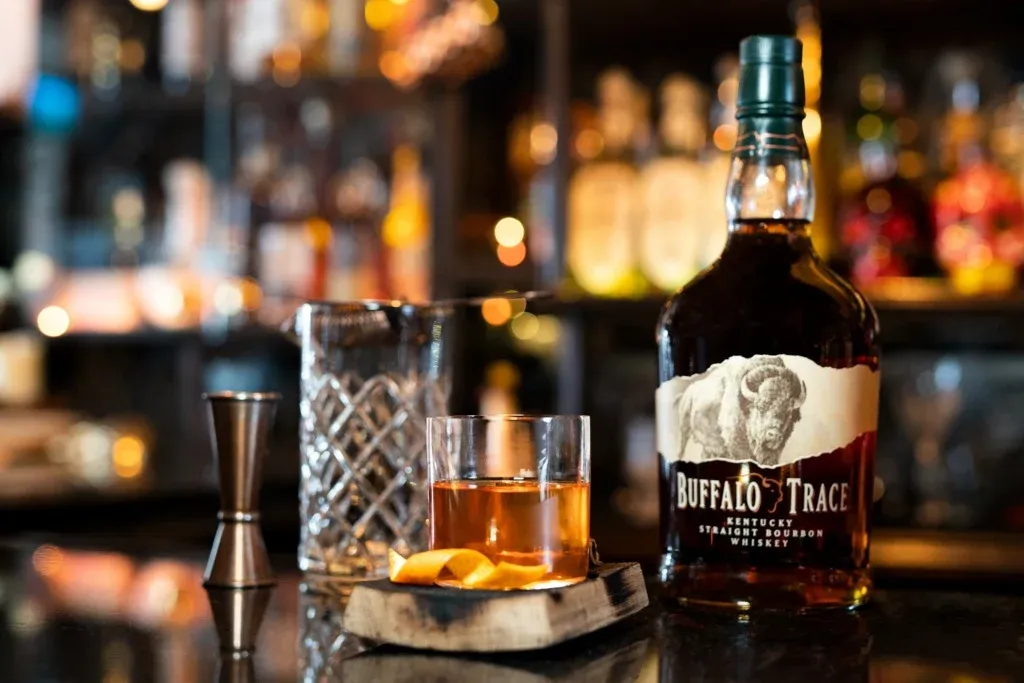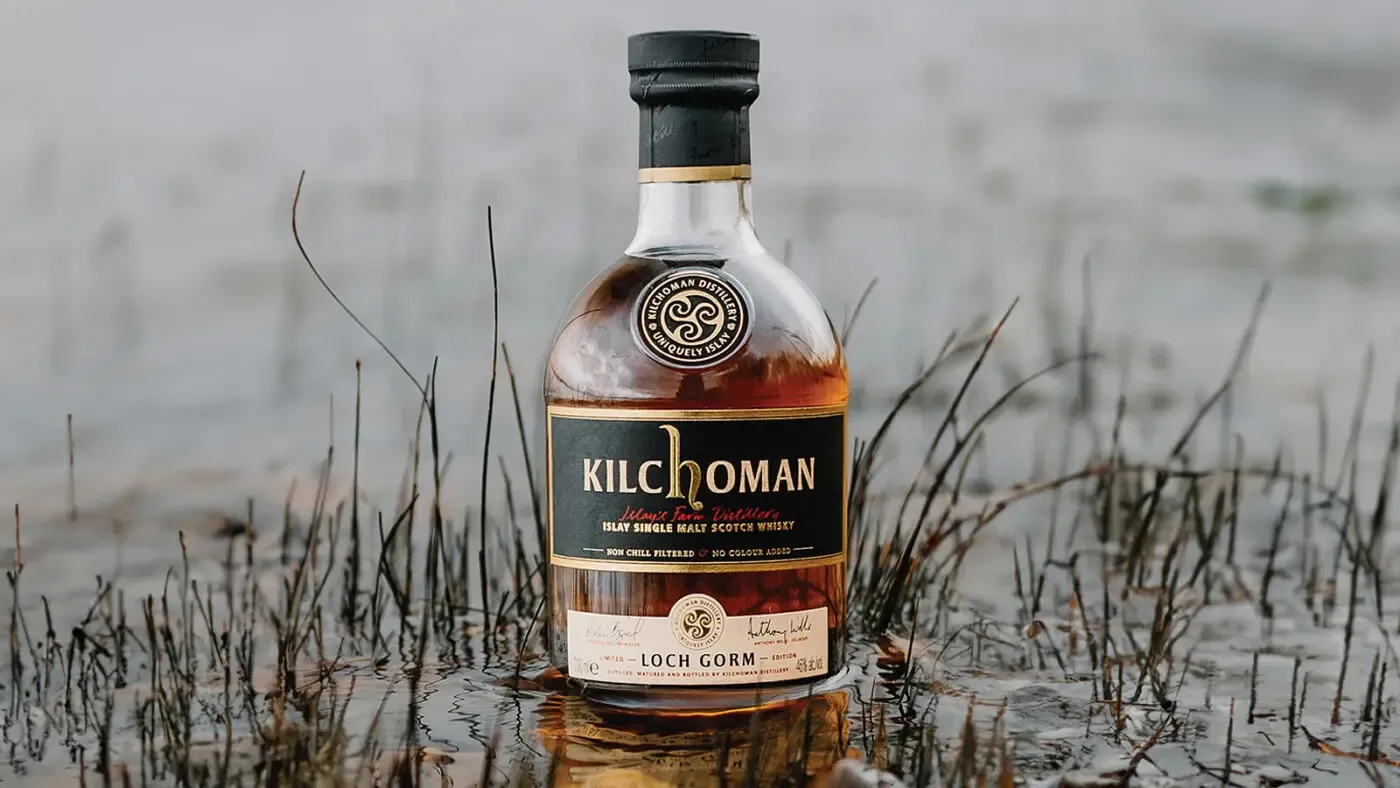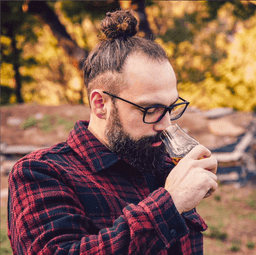24.06.2025
10 best Whisky brands of all times acording to Simone Sarchi

10 best Whisky brands of all times acording to Simone Sarchi
- Springbank (Campbeltown, Scotland)
- Laphroaig (Islay, Scotland)
- Buffalo Trace Distillery (Kentucky, USA)
- Waterford (County Waterford, Ireland)
- The Scotch Malt Whisky Society (Independent Bottler, Scotland)
- Kilchoman (Islay, Scotland)
- GlenAllachie (Speyside, Scotland)
- Yamazaki (Osaka, Japan)
- Signatory Vintage (Independent Bottler, Scotland)
- Highland Park (Orkney, Scotland)
Selecting the 10 best whisky brands in the world is a daunting task. There are hundreds of distilleries across Scotland, Ireland, the U.S., Japan, and beyond, each offering unique expressions, philosophies, aroma and flavours. So let’s be clear: this list isn’t an objective truth carved in oak. On the contrary, it’s strongly influenced by my personal taste and experiences.
The distilleries and independent bottlers featured here were chosen not only for their consistent quality, but for their character, their boldness, their history and their spirit of experimentation. These are whiskies that reflect deep respect for tradition while pushing boundaries in the pursuit of flavour and identity.
Some names are well-known, others a bit less maybe. Some have hundreds of years of history, others are shaping what whisky could become in the next generation. And while only 10 are featured here, there are many more distilleries I love and constantly explore: because the journey of discovering new whisky is never finished.
Some of you will agree, at least in part, others won’t agree at all. I took this article as a challenge, and I assure you that selecting only 10 brands was extremely difficult. Some of my favorite distilleries and brands aren’t even on this list, but I tried to offer a variety of styles, countries, stories, traditions, flavours, and aromas.
Let’s raise a glass to character, innovation, and the magic of barley, wood, time, and imagination. Here are my 10 best whisky brands in the world (in no particular order, by the way).
Springbank (Campbeltown, Scotland)
Springbankis a living monument to whisky tradition. One of the last remaining distilleries in Campbeltown (along with Glengyle and Glen Scotia), it operates almost entirely by hand, including its own floor maltings, a rarity in modern whisky production. The distillery malts all the barley it needs, using local peat and a portion of locally grown barley. It is one of the very few distilleries to independently manage the entire production process in-house.
What sets Springbank apart is not only its commitment to craft, but the diversity of its core offerings: the original Springbank line, slightly peated and complex; Longrow, boldly peated; and Hazelburn, unpeated and triple distilled.
The Mitchell family, who founded the distillery in the 19th century, still owns and runs it today, making Springbank the only Scottish distillery from that era still in family hands. Their whiskies are unapologetically traditional, always intriguing. If whisky has a soul, Springbank bottles it.
This, along with its limited production, is certainly one of the reasons why Springbank is among the most sought-after — and also one of the hardest to find — whiskies out there. The secondary market can often be off-putting, but if you manage to find a bottle at a reasonable price, don’t miss out.
Laphroaig (Islay, Scotland)
Founded in 1815, [Laphroaig|(https://spiritory.com/search?search=Laphroaig&page=1) holds a special place in my heart. The 10 Year Old was the dram that made me fall in love with whisky from the very first sip. That intense medicinal peat, the briny sea air, and the underlying sweetness struck a chord I’ve never forgotten.
Beyond nostalgia, Laphroaig is one of the few distilleries that still uses floor maltings and matures most of its whisky on Islay, a factor that deeply influences its maritime character. From classic expressions to innovative cask finishes, fermentation experiment and vintage bottlings, Laphroaig continues to evolve while remaining proudly distinctive. It’s a truly polarizing distillery — one that people tend to either love or hate, with no middle ground.
Unlike many iconic distilleries, Laphroaig has been sold as a single malt since its early days, including in the United States during Prohibition, where it was marketed as medicinal whisky.
Buffalo Trace Distillery (Kentucky, USA)

One of the oldest and most respected bourbon distilleries in the United States, Buffalo Trace is an institution. From its historic warehouses come a wide range of legendary names: Eagle Rare, Weller, E.H. Taylor, Stagg, Blanton’s, and the almost-mythical Pappy Van Winkle.
The distillery uses four different primary mash bills. The recipes are secret, known only to Master Distiller Harlen Wheatley and his team. However, many have drawn some likely conclusions. Mash Bill #1 (Bourbon) is the most commonly used and is believed to contain less than 10% rye. Mash Bill #2 (Bourbon) is thought to include a slightly higher rye content, somewhere between 10% and 15%.
To these, we can add Mash Bill #3, used for the famous Pappy Van Winkle and Weller bourbons in which rye is replaced with wheat. Finally, Mash Bill #4 is used for the production of rye whiskey and is believed to contain the legal minimum of 51% rye.
Buffalo Trace balances tradition with innovation, exceptional aging expertise, and places great value on warehouse placement, which significantly impacts the final product. It’s a distillery that offers something for everyone: from budget-friendly gems to collectible rarities. A true pillar of American whiskey.
Waterford (County Waterford, Ireland)
Waterford might be one of the most ambitious whisky projects of the 21st century. Founded by Mark Reynier, former head of Bruichladdich, Waterford focuses obsessively on terroir. Each release of one of their three lines, the Single Farm Origin, comes from a specific farm, harvest, and barley variety, creating a radical transparency that treats whisky more like wine.
The core concept the distillery aims to convey is that the choice of raw material, how and where it is grown, has a profound impact on the final product. While most distilleries rely on the same malted barley and shape their identity through fermentation, distillation, and aging processes, Waterford took the opposite approach: it standardized production methods to focus primarily on the barley.
Unfortunately, the distillery is currently under financial administration, possibly due to a lack of market understanding or strategic missteps. But that doesn’t diminish its vision: putting raw material at the heart of whisky making. It’s a lesson I’m convinced, and hopeful, more distilleries will take seriously in the future. For that boldness and idealism, Waterford earns its place on this list.
The Scotch Malt Whisky Society (Independent Bottler, Scotland)
The Scotch Malt Whisky Society (SMWS) is more than just a bottler: it’s a community, a philosophy, and for many, a love affair with cask strength, single cask whisky. Founded in 1983, the Society bottles unique, unfiltered, undiluted casks from a wide range of distilleries, each with imaginative tasting notes and funky names.
Some of the best whiskies I’ve ever tasted were SMWS bottlings. Whether a fiery Caol Ila or a tropical Glen Grant, every bottle feels like an invitation to explore whisky’s wildest corners. But SMWS is also about connection: through its member-only lounges, tastings, and global events, it has built a true whisky culture.
If you find yourself in Edinburgh, you simply can’t miss a visit to The Vault: the spiritual home of the Society. This member’s whisky bar is located in the port of Leith and was once a a wine merchants bonded warehouse. Today, you can enjoy one of their many releases, surrounded by fellow enthusiasts. Let the friendly and knowledgeable staff guide you through a blind tasting flight, you’ll be surprised by the drams you discover.
Blind tasting is, in fact, at the heart of the Scotch Malt Whisky Society experience. On their bottlings, you won’t find the name of the distillery the whisky comes from: just some tasting notes and an evocative name. The goal is to keep the drinker focused on the dram itself, without being influenced by branding or origin. If you want to know those details, you’ll need to crack the code printed on the label.
Kilchoman (Islay, Scotland)

When Kilchoman opened in 2005, it was the first new Islay distillery in over 124 years. From the beginning, it aimed to honor tradition: farm-to-bottle production, in-house floor maltings, and on-site maturation.
Its whiskies reflect a youthful intensity, backed by a strong sense of place. Expressions like Machir Bay and Sanaig deliver complexity beyond their years, while the 100% Islay releases, made entirely from homegrown barley, embody authenticity. Kilchoman also isn’t afraid to play, experimenting with mezcal, cognac, Porto, Sauternes and many other casks.
This Islay distillery is proof that authenticity and modernity can not only coexist but thrive.
GlenAllachie (Speyside, Scotland)
Under the leadership of industry veteran Billy Walker, GlenAllachie has become one of Speyside’s most exciting distilleries. Since 2017, it has carved a niche with bold cask experimentation: from sherry to virgin oak, Moscatel to Chinquapin, Mizunara to Scottish oak, each expression tells a unique story.
GlenAllachie’s style is rich, full-bodied, and often spiced, a flavorful contrast to Speyside’s typically delicate profile. It’s a distillery unafraid to take risks, and those risks are paying off in spades.
Before 2017 of its production was used in blended Scotch. In less than 10 years they managed to create a phenomenal stand-alone brand. Today, we have single malts that truly express an innovative whisky still rooted in tradition, often at reasonable prices.
The distillery also produce a peated single malt whisky that goes under the name of Meikle Tòir.
Yamazaki (Osaka, Japan)
Choosing between Yamazaki and Yoichi was a personal dilemma. I personally lean toward Yoichi for its robust, peated style, but Yamazaki earns its place as Japan’s first and most historically significant whisky distillery.
Founded in 1923 by Shinjiro Torii, Yamazaki blends Scottish techniques with Japanese craftsmanship and sensibility. The result is a whisky that balances precision and elegance, often matured in a mix of American, Spanish, and Japanese Mizunara oak.
Yamazaki is not just a brand, it’s a symbol of Japan’s unique approach to whisky, rooted in harmony, balance, and deep cultural respect.
2023 marked the 100th anniversary of the distillery.
Signatory Vintage (Independent Bottler, Scotland)
Founded in 1988, Signatory Vintage one of Scotland’s most respected independent bottlers. Known for its vast stock and meticulous approach, Signatory bottles single malts, often at cask strength, always natural color and without chill filtration.
What makes Signatory special is consistency: the quality is reliably high, the labeling is transparent, and the pricing is generally fair. Whether it’s a rare Edradour or a bold** Ballechin**, each bottle feels curated with care. For whisky lovers seeking authenticity and variety, Signatory is always a go-to.
The founder, Andrew Symington, is now also the owner of Edradour Distillery, located in Pitlochry and known as the smallest traditional distillery in Scotland. In addition to their Edradour single malt, they also produce a peated single malt called Ballechin.
Highland Park (Orkney, Scotland)
Highland Park often praised for its balance: lightly peated but floral, sweet but structured. One of the few distilleries to still use floor maltings, it incorporates local Orkney peat, which is rich in heather and produces a gentler smoke.
The distillery is malting on-site around 25% of its need, firing the kiln with peat, for the first 8 hours, and coke for the remaining 19 hours. While the sourced malt is unpeated.
Beyond the liquid, Highland Park is about integrity. Avoiding the marketing noise (we won’t talk about the Vikings), in my opinion it consistently delivers whisky that is elegant, nuanced, and deeply satisfying.
About the author

Simone Sarchi
Italian journalist with a MA degree in International Journalism from City University of London. His love for whisky began with that very first sip of Laphroaig 10, which drew him into the world of peated malts and eventually led him to explore the endless variety of flavours and aromas this spirit has to offer. In recent years, he has combined his passion for whisky with his commitment to quality storytelling through his social media channels, driven by the belief that whisky is for everyone… you just have to find the right dram for your palate.
